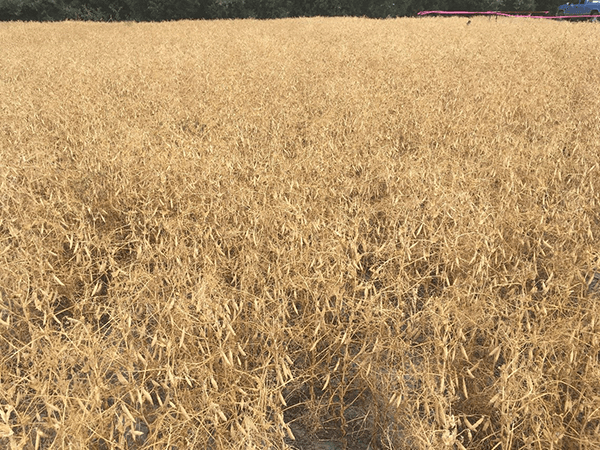
Should You Stop Treating Cotton for Insects?
Should I treat this cotton for bollworm eggs, plant bugs or stink bugs? This is not a one-size fits …



El inglés es el idioma de control de esta página. En la medida en que haya algún conflicto entre la traducción al inglés y la traducción, el inglés prevalece.
Al hacer clic en el enlace de traducción se activa un servicio de traducción gratuito para convertir la página al español. Al igual que con cualquier traducción por Internet, la conversión no es sensible al contexto y puede que no traduzca el texto en su significado original. NC State Extension no garantiza la exactitud del texto traducido. Por favor, tenga en cuenta que algunas aplicaciones y/o servicios pueden no funcionar como se espera cuando se traducen.
Inglês é o idioma de controle desta página. Na medida que haja algum conflito entre o texto original em Inglês e a tradução, o Inglês prevalece.
Ao clicar no link de tradução, um serviço gratuito de tradução será ativado para converter a página para o Português. Como em qualquer tradução pela internet, a conversão não é sensivel ao contexto e pode não ocorrer a tradução para o significado orginal. O serviço de Extensão da Carolina do Norte (NC State Extension) não garante a exatidão do texto traduzido. Por favor, observe que algumas funções ou serviços podem não funcionar como esperado após a tradução.
English is the controlling language of this page. To the extent there is any conflict between the English text and the translation, English controls.
Clicking on the translation link activates a free translation service to convert the page to Spanish. As with any Internet translation, the conversion is not context-sensitive and may not translate the text to its original meaning. NC State Extension does not guarantee the accuracy of the translated text. Please note that some applications and/or services may not function as expected when translated.
Collapse ▲
Should I treat this cotton for bollworm eggs, plant bugs or stink bugs? This is not a one-size fits …

Southern green stink bug nymphs Although stink bugs were light across the state (with a few exceptions) in corn and …

Fall armyworm is a sporadic outbreak pest that doesn’t overwinter in North Carolina. Populations migrate here as early as …

We are approaching soybean harvest in North Carolina and therefore County Extension agents and growers may be considering entering …

It is time to start scouting cotton and soybeans for corn earworm also known as bollworm. On Monday (7/26/21), we …

As we near early August, cotton growers should be shifting their focus from early-season insects to late-season pests that …

Waterhemp is a new weed to North Carolina. It looks a lot like the other pigweeds- redroot pigweed and …

Please share across your networks. The NC State University Organic Working Group will be holding an Organic Commodities Field Day …

Aflatoxins are a type of mycotoxin that is produced by Aspergillus flavus which has a worldwide impact on human …

Does applying Xyway fungicide (flutriafol) in-furrow at planting negatively affect seedling germination in corn? NC State Extension gives an independent …

The biggest handicap to growing crops in the Sandhills is the sandy soil. Acidic and low in organic matter, …
NC State Extension has two thresholds for bollworm, depending on the type of cotton planted: Bollgard II, TwinLink, WideStrike: 25 total …

Tropical Storm Elsa brought us a needed slow, soaking rain that will likely benefit most growers across North Carolina. …

A mid season soybean management webinar was hosted on 7/1/2021 via Zoom by NC State Extension Specialists Drs. Wes …

Cotton must be managed differently pre- and post-bloom. First of all, we need to use the correct sampling method. …

Join us for a mid-season soybean management webinar on July 1, 2021, at 8 a.m. via Zoom. The format …

The 2021 planting season has been yet another challenge in North Carolina. During the early part of the planting …

Conditions are looking much better. You can see below that we are close to bumping that morning soil temperature …

Conditions for the coming week do not look good as you can see estimated planting conditions for Rocky Mount …

Soil temperatures are looking good across the cotton-producing areas of the state today. However, a cool front is moving in …

This publication provides information to growers about soybean production in North Carolina. It discusses economic …
This publication provides guidance to Extension agents on how to design and conduct trials and …

Two species of hornworm caterpillars feed on tobacco and other plants. Tobacco hornworms (Manduca sexta) …

This publication, chapter 3 of the North Carolina Soybean Production Guide, covers fertilization and nutrient …

This publication discusses the findings of applied research conducted to answer production questions about growing …

Fertilizer burn can occur to the soybean seed from an in-furrow application and to the …

Sunscald is caused by bright sunlight on a wet leaf after exposure to high temperatures. …

This publication, chapter 12 of the North Carolina Soybean Production Guide, discusses the soybean market …